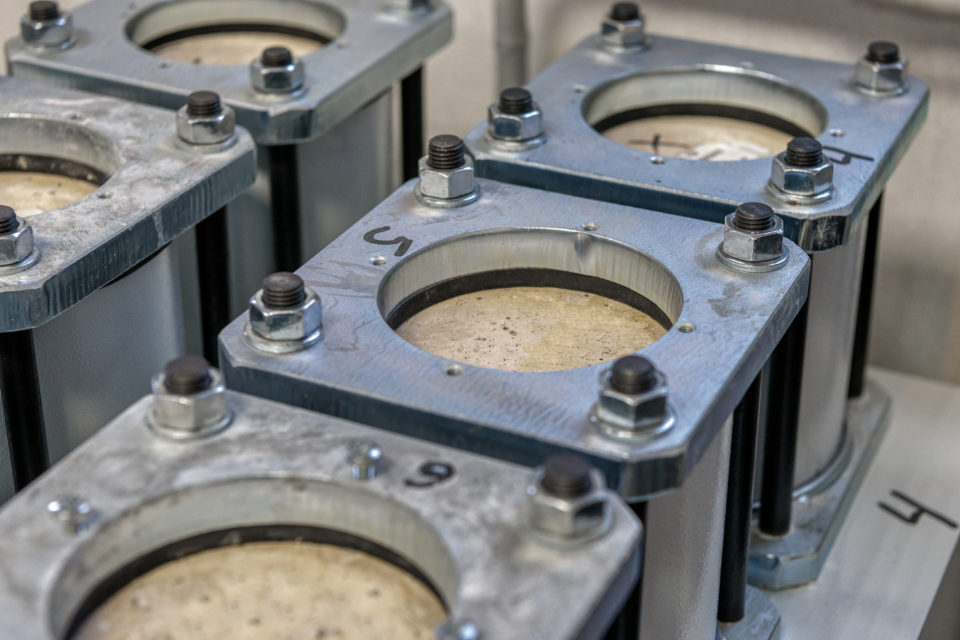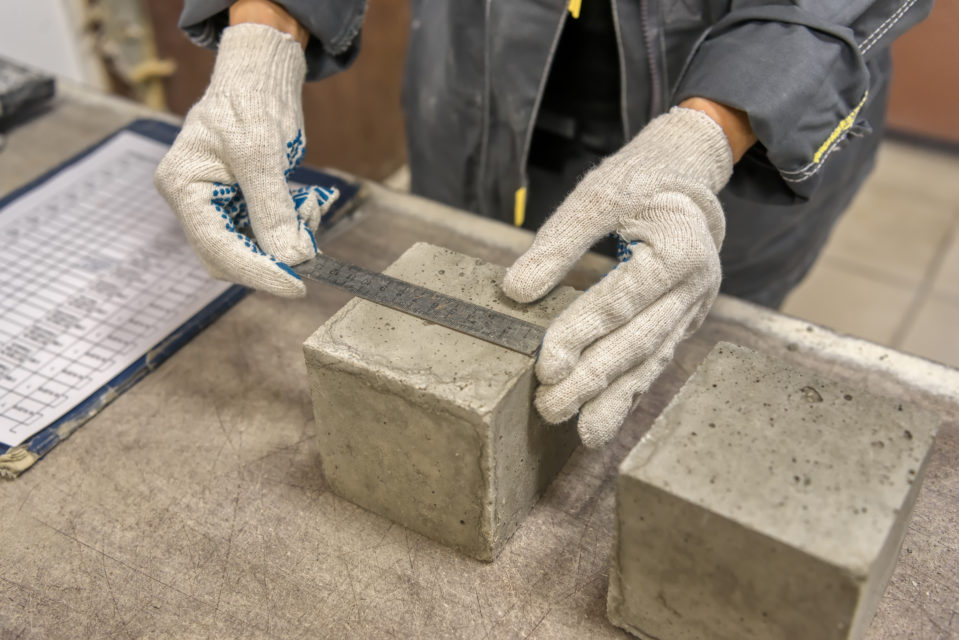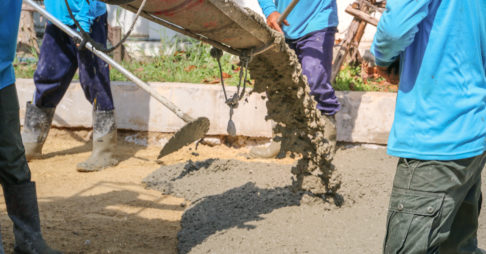In our previous post, we summarized Jack Holley’s expert tips for concrete mix optimization which were originally discussed in our Sep. 1 webinar.
This post will touch on how the mix adjustment process differs from mix optimization, the secrets to mix adjustment success, and list everything you need to know from a Quality Control (QC) and Quality Assurance (QA) perspective regarding mix adjustment with CO2 when using CarbonCure.
The Secrets to Mix Adjustment Success
Designing and evaluating concrete mixes is both challenging and rewarding. “It involves a lot of testing and a lot of work,” said Jack. “There is usually some fighting with senior management to get enough resources to do it properly. However, once you get over those initial challenges, it’s very rewarding, and it helps the QC/QA team move from being a cost center to being a cost avoidance, profitability, and risk mitigation function.”
The overall key to the mix optimization process is to have the full support of senior management. The process has to be ingrained into the standard operating procedures of the company and be reviewed regularly by senior management. It has to become a part of everyday life at the plant.
According to Jack, the other critical secret to mix adjustment success is meaningful metrics. “You need a way to set goals, review progress, and track success so you can stay top-of-mind with senior management.”

CarbonCure’s Mix Adjustment Process
According to Jack, the mix adjustment process with CarbonCure begins with quantifying the additional strengths achieved with the technology. Then it’s just a matter of reducing the total cementitious content.
A simple example would be as follows:
- A 4,000 psi (27.6 MPa) specified mix, pre the added CO2, averaged 4,500 psi (31 MPa).
- With CO2 added via CarbonCure, the mix achieved 4,725 psi (32.6 MPa) — a 5% increase in strength.
- This enables the reduction of cementitious materials by 3% while still maintaining its strength.
In this example, the original total cementitious content was 540 pounds per cubic yard (320 kilograms per cubic metre). A decrease of 3% brings that to 524 pounds per cubic yard (311 kilograms per cubic metre) — a reduction of 16 pounds (7 kilograms), which could be replaced with an equal volume of sand in the mix design.
Another way to quantify the total potential is to look at the improvement in cementitious efficiency:
- Without CarbonCure: At an average 4,500 psi (31 MPa) with a total cementitious content of 540 pounds (245 kilograms), the cementitious efficiency would be 8.33 psi per pound (0.13 MPa per kilogram).
- With CarbonCure: At 4,725 psi (32.6 MPa) with a total cementitious content of 524 pounds (238 kilograms), the cementitious efficiency would be 8.74 psi per pound (0.13 MPa per kilogram).
Achieving the pre-CarbonCure level of 4,500 psi (31 MPa) would require dividing 4,500 psi by 8.74 psi per pound (31 MPa by 0.13 MPa per kilogram), which would equal 514 pounds of cementitious content per cubic yard (7.81 MPa per kilogram). This is a 26 pound (11.8 kilogram) or 4.8% reduction, in line with the 5% increase in strength.

Things to Avoid During the Mix Adjustment Process
The most important thing to avoid in the mix adjustment process is making large adjustments to total cementitious content too quickly. Even if your tests show large potential, move slowly.
For example, if your test results indicate a 50 pound per cubic yard (29.7 MPa per cubic metre) decrease, start with a decrease of 20 to 25 pounds (9 to 11 kilograms) and work up from there.
After that, Jack advises that senior management stay in the loop on the progress and stay invested in the project’s success.
For more design tips from Jack, watch the full webinar on demand. If you’d like to chat about how you can adjust your mix design with CarbonCure and benefit from more sustainable concrete, please get in touch with a CarbonCure representative.


